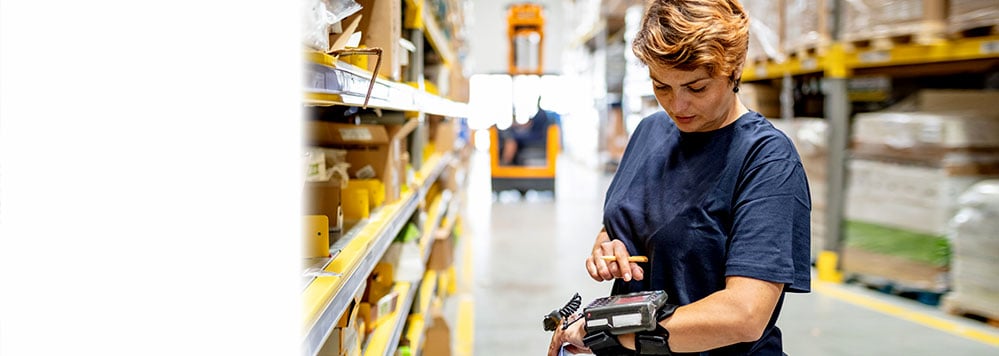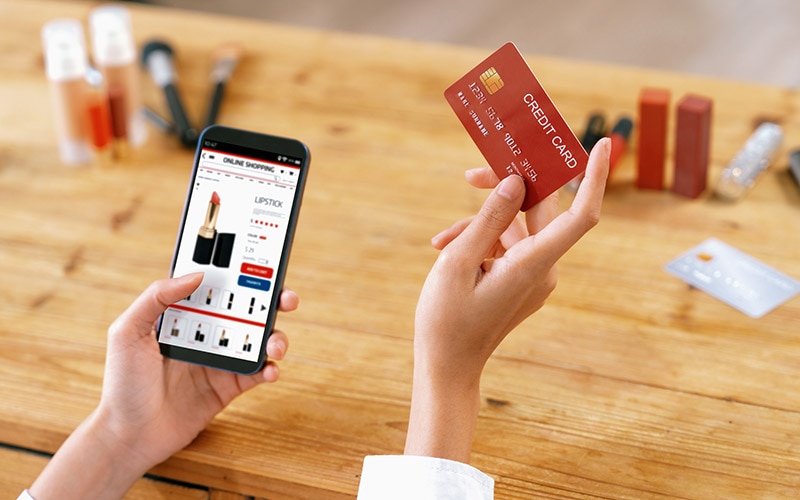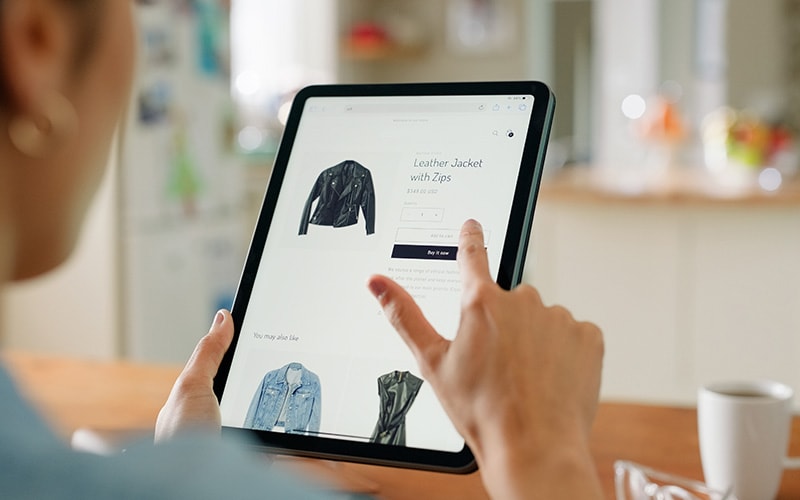Last year put an unprecedented strain on consumer-facing industries. As lockdowns spread across the globe, demand swung widely and unpredictably, supply chains were often obstructed, and retail outlets were regularly shuttered.
The pressure has forced a race online for retailers, consumer packaged goods, and logistics companies. E-commerce is now the core of the industry. Supply chain planning and inventory management is much more agile and responsive. Delivery options are more varied, flexible and reliable.
Of course, there have been many casualties. Those that have not been able to easily make the shift to this new – primarily digital - normal have hit the wall or are at significant risk. But there have been many winners from this change. And amongst them the mood is rightly of a sense of relief, tinged with pride.
But we aren’t out of the woods yet. While a surprising number of good things came out of 2020 for the consumer industries, there are still many challenges ahead.
The Good: Sales (online) surged
Overall consumer spending growth was muted over 2020, but when people did spend, it was mainly online, and in a big way. This will have far-reaching impacts on the industry and competitive landscape.
U.S. shoppers spent a record $34.36 billion on retail websites over the five-day period from Thanksgiving to Cyber Monday, up 20.6% from last year.1 Online sales comprised 32.1% of retail sales from Thanksgiving through Cyber Monday, up from 23.8% web penetration in 2019.2
Grocery was a significant focus and perhaps where the biggest shift to online was felt. During the pandemic, 79% of consumers have bought groceries online, a jump from 19% a year ago.3 U.S. online grocery sales increased from $1.2 billion in August 2019 to $7.2 billion in June 2020.4
Figure 1. The growing digital footprint of top U.S. retailers

Source: Company reports
Importantly, it was those who were agile enough to switch their model to online – or curbside collection and delivery – that did the best (Figure 1). Salesforce data shows merchants that offered curbside, drive-through and in-store pickup options increased digital sales at a 26% higher rate versus retailers that did not provide omnichannel options.5
Data shows that consumers’ shift toward e-commerce has accelerated by 5 years due to the pandemic
In the UK, supermarket chain Tesco doubled its slots to 1.5 million every week. While in the US,6 Walmart’s e-commerce sales were up 97% YoY7 and Target grew its same-day fulfilment services by 273%.8
It is not just been the big brands who have benefitted either. Overall digital revenue on Small Business Saturday spiked 30.2% year over year, to $4.68 billion from $3.60 billion the prior year, according to Adobe data.9
Thirty-eight percent of the consumers are making deliberate efforts to shop from small businesses during the holiday season. 10 Thirty-nine percent of U.S. consumers said they are more likely to buy from local or independent brands after the pandemic.11
New age consumer companies are also trying new things in the new normal. UberEats is trying its hands on grocery delivery, and trying to capture in-restaurant dining through contactless payment. ‘Facebook Shops’ which enable users to buy directly from Facebook pages and Instagram profiles are further driving up e-commerce competition.
Almost overnight, the industry has been modernized. According to new data from IBM, the pandemic has accelerated consumers’ shift toward e-commerce by 5 years.12
Long-term, this shift will significantly impact the competitive landscape of the industry. Those that have moved online fast enough are now able to more easily consider accessing global markets. For instance, Nike benefitted from being able to target China, where it broke a record on Singles Day, becoming the first sportswear brand to reach 100 million renminbi sales within 60 seconds of the day starting.
Meanwhile, online leader Amazon now has to think more carefully about how 2020 has suddenly upgraded the capabilities of its formerly physical retail competitors. Not least, the increasing numbers of regional “Amazon-killers” such as Lazada and Flipkart that aim to take a chunk out of their market share.
The Bad: Stores and loyalty stumble
It has not been a positive transformation for all in the industry. The most obvious negative impact has been on those physical retailers that are either not selling essential goods, are struggling to transition business online, or had already had financial woes (Figure 2). For many, it is all of the above.
To get a sense of the challenge, Black Friday, historically a store event experienced a 52% decline in footfall.13 The result has been a series of store closures and bankruptcies both in the US and UK.
It is estimated that almost 8,500 stores have closed in the US14, while in the UK the figure is almost 4,800. Big names such as JC Penny, Neiman Marcus, Brookes Brothers in the US15 and, Debenhams and Arcadia group in the UK have filed for bankruptcy.16 Sadly, the full list is significantly longer.
There could be even darker clouds on the horizon. The emergence and spread of vaccines over 2021 may help physical stores open and increase footfall as people venture out. However, it is also highly likely that people will focus a larger portion of their income on non-retail activities, such as travel, eating out, seeing family and attending events or gym classes.
Loyalty has taken a big hit over this period as well. A survey released from McKinsey in December 2020, revealed that 76% US consumers have tried a new shopping behaviour. This includes 37% of consumers who have tried a different brand, 34% who have tried a different retailer. Over 80% of these consumers intend to continue with this wider choice.17 Many retailers have launched subscription services in a hope to revive consumer loyalty.
Figure 2. Brands and retailers that have acted quickly have performed well with investors, though not all have been so lucky

The Ugly: Sustaining the ‘new normal’
Brands and retailers that shifted online quickly have won themselves a new lease of life. Yet most still have many structural issues to contend with if this is to be a long-term strategy. The next challenge will be to move from 2020’s crisis mode, to 2021’s new normal where recent changes need to be made operationally effective – and profitable.
Difficult decisions need to be taken about what to do with currently closed physical stores. Not least because the timing and volume of a return of footfall is unpredictable and uncertain. Many retail chains have transformed some stores into local distribution centers to support the increased demand for home delivery and curbside pickup. But this is not feasible for a large number of stores and brands.
2021 will demand retailers to adapt to new changes, stay operationally effective, and also make profit
Logistics also require significant restructuring as more people continue to expect more local delivery and pickup. Most large logistics carriers need to refresh their fleets of vehicles into those that are smaller, cheaper and more sustainable. Not only this, but delivery staff are ever more customer facing, and new training will be required in order to build brand loyalty – not just for the delivery company, but for the brands which rely upon them.
The surge in e-commerce has caused visible strains to logistics. The shipment delay rate during the 2020 holiday season is expected to be around 14-18%, with much longer delays in urban areas. Carriers like UPS and FedEx have had to restrict shipping requests from many large retailers like Nike and Gap due to capacity crisis.18 Logistics companies will have to overhaul their sorting centers to provide adequate throughput capacity in order to handle continued growth of e-commerce.
Retailers and CPG firms should look at collaborations that help them merge returns and new orders
Returns is also an area that needs a significant rethink. Shoppers return 5 to 10 percent of what they purchase in store but 15 to 40 percent of what they buy online, according to Happy Returns, a company that tries to reduce returns from consumers.19 E-commerce returns this past holiday season could total as much as $70.5 billion, a 73 percent increase from the previous five-year average, according to CBRE.20
Returned merchandise clogs inventory and results in massive markdowns. Retailers and CPG companies need to figure out ways to work together and connect returns with new orders so that it can be used to fulfil an outbound order. This along with development of a streamlined return process will be key to mitigate the negative impact of returns on profitability.
The way ahead: Connect to compete and serve
“Apocalypse” is commonly used these days to describe the stat of the retail market. But from the firestorm of 2020, a phoenix will rise.
A key facet of last year was increased collaboration and connectivity between consumer packaged goods companies, retailers, and logistics companies. This is something to build on this year and beyond. Each of these industries is interdependent on the other, and the value of this connection was highlighted during the pandemic as many began to share better planning and demand sensing data or integrate last mile delivery options.
Ironically perhaps, through home delivery or curbside pickup, the post-COVID consumer has experienced some of the highest levels of convenience and optionality. Shoppers will continue to expect more of self-service and home delivery. Many may not want to go back to traditional stores in any meaningful way unless they are offered more than just a 20th century experience.
Companies will need to explore many new areas to succeed in the new normal. Earlier, companies sought profit improvements in either supply chain or product development. Going forward, they will also need to explore optimization of last mile delivery, variations in basket size/bundle for online, minimization markdowns associated with increased volumes in returns and more in order to increase profitability.
Ultimately, 2020 has accelerated the industry towards a consolidation that may see CPG, retail and logistics firms share ever more connected value. That could mean more sharing of data, processes, technology, or possibly owners. Either way, consumer-focused companies are emerging leaner than ever before. Now is the time to build bridges across the ecosystem to enable rapid scale and customer service reach.
References
- Lauren Freedman, “The Shopper Speaks: Retailers report increases in AOV during Cyber 5”, Dec 14, 2020, Digitalcommerce360
- April Berthene, “Coronavirus concerns to derail in-store Black Friday shopping”, November 25, 2020, Digitalcommerce360
- Blake Morgan, “50 Statistics Showing The Lasting Impact Of COVID-19 On Consumers”, October 19 2020, Forbes
- Blake Morgan, “3 Lasting Changes To Grocery Shopping After Covid-19”, December 14 2020, Forbes
- Ben Unglesbee, “Winners and losers of Black Friday 2020”, November 28 2020, Retail Dive
- “Tesco profits surge as online orders double”, October 7 2020, BBC
- Shelley E. Kohan, “Walmart’s E-Commerce Grows 97% Compared To Industry’s 27%”, August 19 2020, Forbes
- Sarah Perez, “Target sets sales record in Q2 as same-day services grow 273%”, August 19 2020
- Jessica Young, “Online sales grow a slower-than-expected 20.6% over Cyber 5 but still set records”, December 3 2020, Digitalcommerce360
- Shelly E. Kohan, “Online Customer Spend $14 Billion On Black Friday And Thanksgiving: By The Numbers”, November 28 2020, Forbes
- Blake Morgan, “50 Statistics Showing The Lasting Impact Of COVID-19 On Consumers”, October 19 2020, Forbes
- Sarah Perez, “COVID-19 pandemic accelerated shift to e-commerce by 5 years, new report says”, August 24 2020, TechCrunch
- Ben Unglesbee, “Black Friday foot traffic down more than 52%”, Retail Dive November 30 2020
- “YTD store closures”, December 15 2020, Coresight Research
- Andy Markowitz, “13 Iconic Retailers That Have Fallen Into Bankruptcy”, Novermber 23 2020, AARP
- “Who’s Gone Bust in Retail?“, December 2020, Retail Research
- “Survey: US consumer sentiment during the coronavirus crisis“, December 8 2020, McKinsey
- “Shipping Crisis For Holiday Season Arrives Right On Time”, December 2 2020, Pymnts
- Amanda Lasky, “That sweater you don’t like is a trillion-dollar problem for retailers. These companies want to fix it”, January 12 2019, CNBC
- Michael Gerrity, “Holiday Season E-commerce Returns in U.S. to Hit Record $70 Billion in 2020”, December 10 2020, World Property Journal





